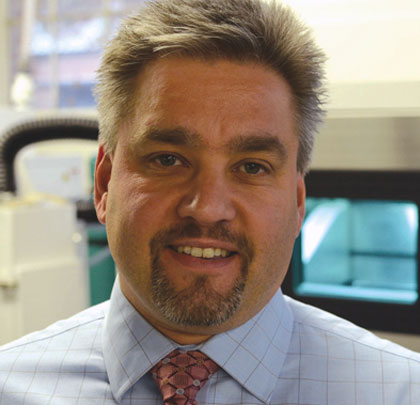For today’s manufacturers, the shift is on from mass production to mass customization. Dr. Ola L. A. Harrysson is co-director of the Center for Additive Manufacturing and Logistics at North Carolina State University’s Fitts Department of Industrial and Systems Engineering. He is also a professor and Fitts Fellow in Biomedical Manufacturing. Dr. Harrysson spoke with Modern Pumping Today to offer his insight on the growing need for flexible and adaptive approaches in the domestic manufacturing sector.
MPT: What is Industrial and Systems Engineering (ISE) and how does it prepare engineers for the future?
Dr. Ola L. A. Harrysson: Industrial and Systems Engineering is a fairly broad field including manufacturing, but the main objective is to optimize processes and make them more efficient and more profitable. ISEs have been helping numerous industries with scale-up problems and taking technologies from the laboratories and making them main stream. ISE students learn how to solve problems and to create systems to handle anything from ordering raw materials, schedule of production, and manufacturing, to quality control and logistics. These new technologies will change the supply chain in many ways and ISEs will be well familiar with these challenges.
MPT: How does ISE relate to the shift from mass production to customization?
Dr. Ola L. A. Harrysson: Mass customization requires flexible manufacturing systems, which is one of the main topics for ISEs. For a US company to be competitive in the international market they usually need to be able to offer services that the competitors don’t. In many cases this means that US companies will need to be more agile and make what each customer wants instead of mass producing. ISE students are very knowledgeable in the just-in-time concept and make to order, which are basics concepts for mass customization. ISE students probably spend more time learning about mass customization than any other engineering discipline.
MPT: How do you foresee the role of public and private partnerships in tomorrow’s manufacturing field?
Dr. Ola L. A. Harrysson: Public-private relationships seem to be more common these days and might play an important role in the future. The ISE AM research group has collaborated with small companies through SBIR/STTR efforts for many years with mixed results but our current involvement with America Makes has pushed these collaborations much further by involving large companies as well. In the past it was very difficult to get numerous educational entities as well as private companies to collaborate on the same project but that is now happening. The European Union has forced collaborations between the nations, educational institutions, and private companies for many years through their funding. The students that are involved in these research projects will learn to collaborate and to coordinate with multiple parties within different organizations. These are skills that will help them in the future since this will most likely be a model that will stay for a while.
MPT: In fields related to infrastructure development, especially in industrial pumping, the recent decades have felt a “brain drain,” with retiring engineers not being replaced by newer graduates. How can the industry best attract tomorrow’s best minds?
Dr. Ola L. A. Harrysson: Industries need to be active in their recruitment of tomorrow’s engineers, and they need participate at an early stage. Students who are approached early and offered internship opportunities will often return to the companies upon graduation given that they are challenged and rewarded for their work. We have had many students who have completed several rotations as interns, and they usually end up at the company that impressed them the most by challenging them and giving them responsibilities. Further, the industry should be actively involved in the educational programs by identifying the skills that they need and providing real-life opportunities for the students in form of course projects or case studies.
MPT: What are some of the keys to establishing a flexible and sustainable manufacturing sector domestically—and a workforce prepared for it?
Dr. Ola L. A. Harrysson: The US is currently falling behind the rest of the world when it comes to additive manufacturing research and development and the government needs to invest more in this sector. The ISE Department at NCSU has been working in AM for over twelve years and have been pushing the manufacturing aspect of it. However, it has been very difficult until recently to secure funding for the research and development. We have been teaching courses in these areas for a long time and more universities need to follow to provide engineers with sufficient skills. The hands-on aspect of AM is very important since these technologies are new to most people. Although the high-end equipment is very expensive and difficult for universities to afford, AM has the potential to level the playing field since these technologies tend to be very automated and the need for manual labor is minimal. The equipment cost the same in most countries and the materials are provided by a few vendors so US companies have the chance to again be competitive in mass customization. ■
MODERN PUMPING TODAY, September 2014
Did you enjoy this article?
Subscribe to the FREE Digital Edition of Modern Pumping Today Magazine!
![]()


